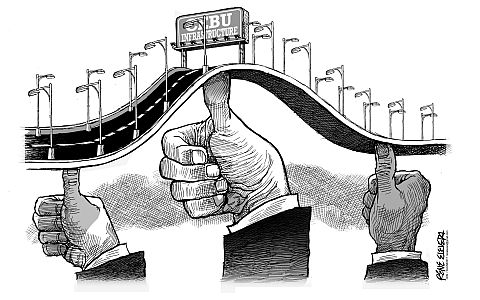
Trying to implement major projects to be funded by the national government can be quite a tedious and taxing process that can take years of lobbying and processing papers, not to mention being further complicated by partisan politics.
More often than not, though, it’s about the Department of Public Works and Highways’ (DPWH) failure to communicate and inform the public about their projects due to their reliance to local governments to do the job for them and by not doing enough to promote them at the same time.
That was the situation seen in two projects in Cebu City. In Barangay Apas, residents were said to be opposed to a P5.6-million water catchment project to be funded by the national government.
When asked about the opposition of his constituents, Apas Barangay Captain Ramil Ayuman said they were not consulted about where the main line of the water catchment project will be built.
He said they would have preferred that it be situated in a higher portion of the barangay where it can better catch the rainwater before it reaches the lowland areas.
The second project involved the P683-million underpass project that officials of the affected barangays claimed they know nothing about as they were not even consulted about the extent of the project.
It’s no small coincidence that Ayuman and the barangay officials complaining about the underpass project are affiliated with Team Rama. It’s also quite interesting to note that former mayor Michael Rama used the occasion to reiterate his position that road widening should be implemented first before the underpass project is undertaken.
But then again, it has been a case of tug-of-war between Team Rama and the Bando Osmeña-Pundok Kauswagan (BO-PK) in terms of their pet projects specifically when it comes to the flyovers, which the administration is still interested in pursuing.
Between these two groups, the DPWH had to keep itself on the sidelines and provide technical expertise and advice on projects, as well as listen to local officials, some of whom may know better and others whose motives are suspect.
The basis for the crafting and implementation of these major projects are supposed to be the bottoms-up approach in which local governments propose projects based on extensive consultations with stakeholders.
In this respect, we wish that the DPWH, probably in tandem with nongovernment organizations (NGOs) and the Department of Interior and Local Government (DILG), can reconcile all these opposing views and proposals to come out with a unified list of proposed projects with a definite target, programs of works and deadline of completion.
But that is easier said than done in actual practice because what actually happens is that the group that has the President’s ear usually wins.